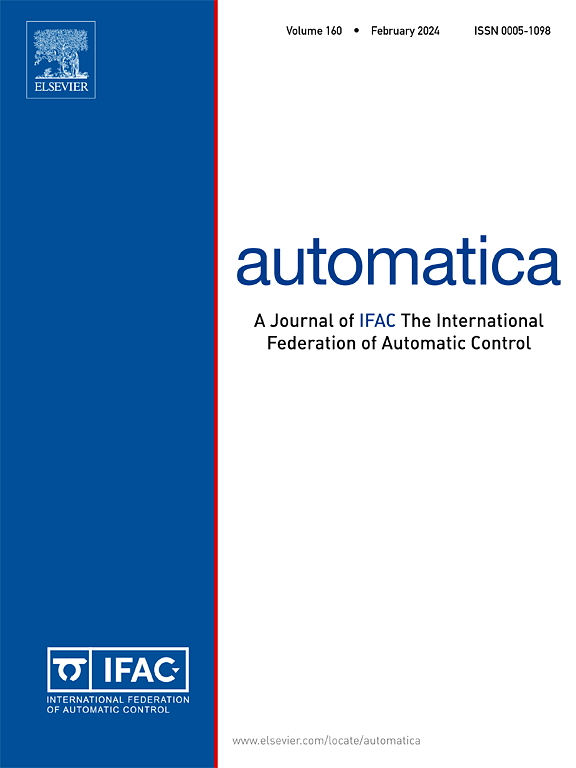Data-driven dynamic optimal allocation for uncertain over-actuated linear systems
IF 4.8
2区 计算机科学
Q1 AUTOMATION & CONTROL SYSTEMS
引用次数: 0
Abstract
The dynamic control allocation problem for LTI systems is addressed in an uncertain setting. In the presence of unstructured uncertainties affecting the underlying plant, a completely data-driven strategy is envisioned to optimally allocate the control action in the presence of non-constant steady-state behavior of the plant, while leaving untouched the regulated output response induced by an a priori given controller. Compared with the current state of the art, the proposed solution exhibits several appealing features. Such features are: complete invisibility of the allocator’s action (after a training interval if the plant is unknown), exact optimization of the periodic steady-state evolution, arbitrary speed of the allocation action; while all of them are achieved even for unknown plants in this paper, in the current literature they are impossible to achieve or just obtainable for a perfectly known plant.
求助全文
约1分钟内获得全文
求助全文
来源期刊

Automatica
工程技术-工程:电子与电气
CiteScore
10.70
自引率
7.80%
发文量
617
审稿时长
5 months
期刊介绍:
Automatica is a leading archival publication in the field of systems and control. The field encompasses today a broad set of areas and topics, and is thriving not only within itself but also in terms of its impact on other fields, such as communications, computers, biology, energy and economics. Since its inception in 1963, Automatica has kept abreast with the evolution of the field over the years, and has emerged as a leading publication driving the trends in the field.
After being founded in 1963, Automatica became a journal of the International Federation of Automatic Control (IFAC) in 1969. It features a characteristic blend of theoretical and applied papers of archival, lasting value, reporting cutting edge research results by authors across the globe. It features articles in distinct categories, including regular, brief and survey papers, technical communiqués, correspondence items, as well as reviews on published books of interest to the readership. It occasionally publishes special issues on emerging new topics or established mature topics of interest to a broad audience.
Automatica solicits original high-quality contributions in all the categories listed above, and in all areas of systems and control interpreted in a broad sense and evolving constantly. They may be submitted directly to a subject editor or to the Editor-in-Chief if not sure about the subject area. Editorial procedures in place assure careful, fair, and prompt handling of all submitted articles. Accepted papers appear in the journal in the shortest time feasible given production time constraints.
 求助内容:
求助内容: 应助结果提醒方式:
应助结果提醒方式:


